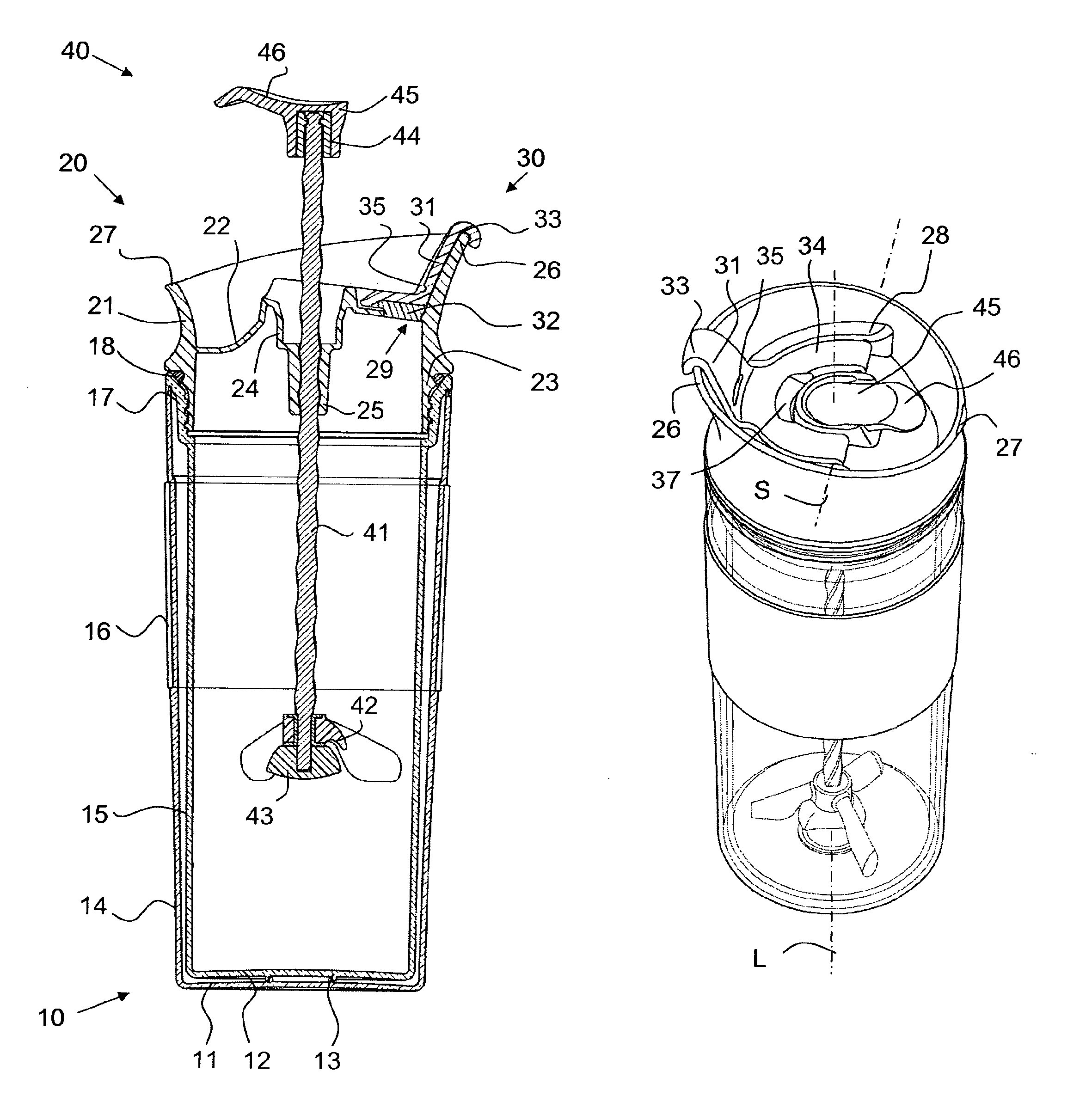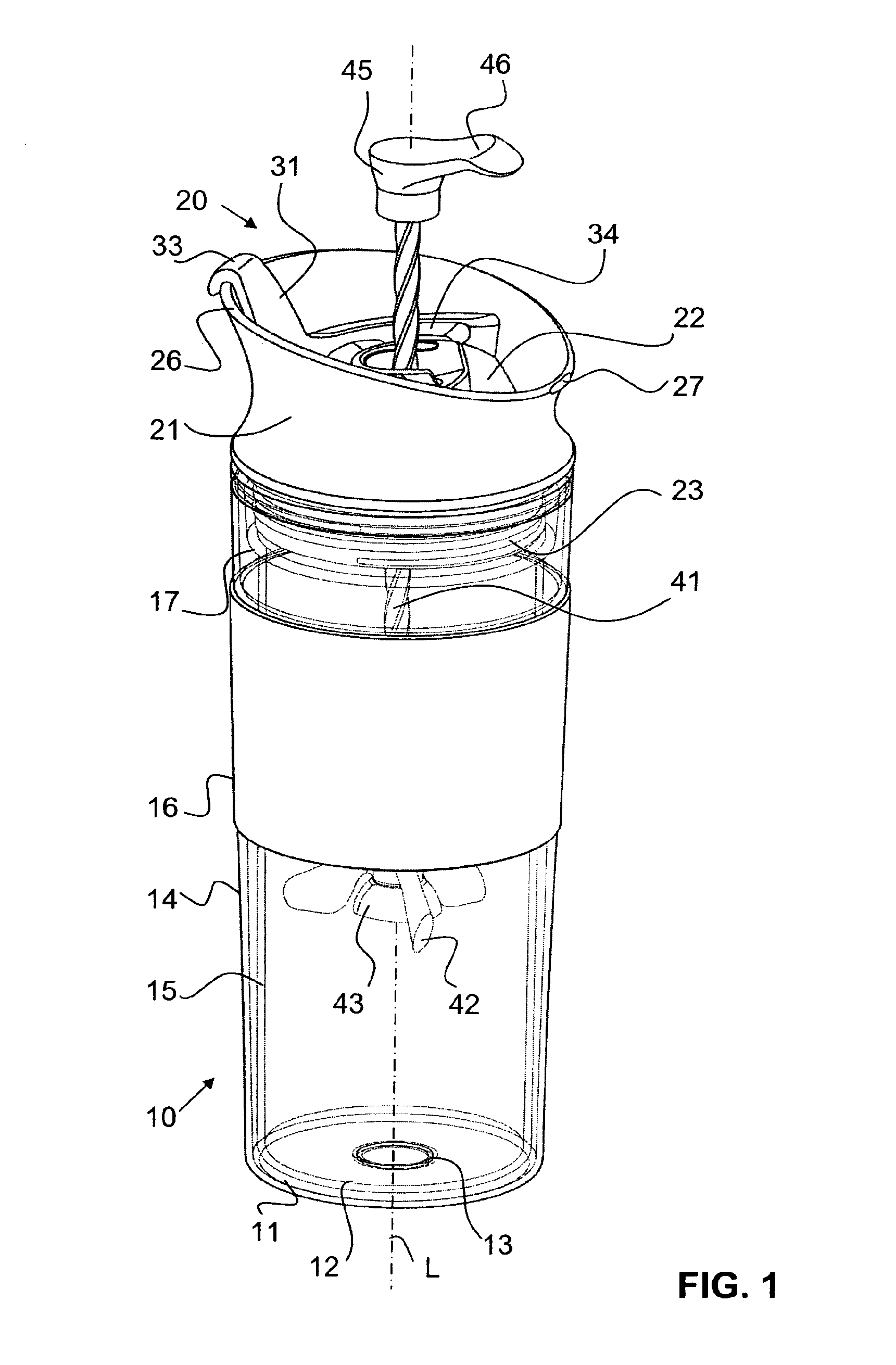Beverage maker having a lockable actuation rod
a technology of actuation rod and beverage maker, which is applied in the direction of beverage vessels, mixers, mixing, etc., can solve the problems of actuation rod slipping out, unsatisfactory hygiene, and complicated operation, and achieve the effect of simple and reliable manner and avoiding incorrect operations
- Summary
- Abstract
- Description
- Claims
- Application Information
AI Technical Summary
Benefits of technology
Problems solved by technology
Method used
Image
Examples
Embodiment Construction
[0031]FIGS. 1 to 4 illustrate a beverage maker according to the invention in line with a first embodiment. The beverage maker comprises a double-walled vessel 10 which is composed of a transparent plastic, having an outer base 11, an inner base 12, an outer side wall 14 and an inner side wall 15. The inner base 12 rests on the outer base 11 in an annular connection region 13. The outer side wall 14 and the inner side wall 15 are connected to one another, in particular welded to one another, in their upper border region. A collar 16 which is composed of a relatively soft material, for example silicone rubber, is situated in a slight recess in the outer side wall 14 on the outer face thereof and surrounds the outer side wall 14 in this region. An internal thread 17 for connecting the vessel 10 to the lid 20 is formed in an upper edge region of the inner side wall 15.
[0032]The lid 20 has a peripheral casing wall 21 which widens toward the top. The casing wall extends further upward in ...
PUM
 Login to View More
Login to View More Abstract
Description
Claims
Application Information
 Login to View More
Login to View More - R&D
- Intellectual Property
- Life Sciences
- Materials
- Tech Scout
- Unparalleled Data Quality
- Higher Quality Content
- 60% Fewer Hallucinations
Browse by: Latest US Patents, China's latest patents, Technical Efficacy Thesaurus, Application Domain, Technology Topic, Popular Technical Reports.
© 2025 PatSnap. All rights reserved.Legal|Privacy policy|Modern Slavery Act Transparency Statement|Sitemap|About US| Contact US: help@patsnap.com



